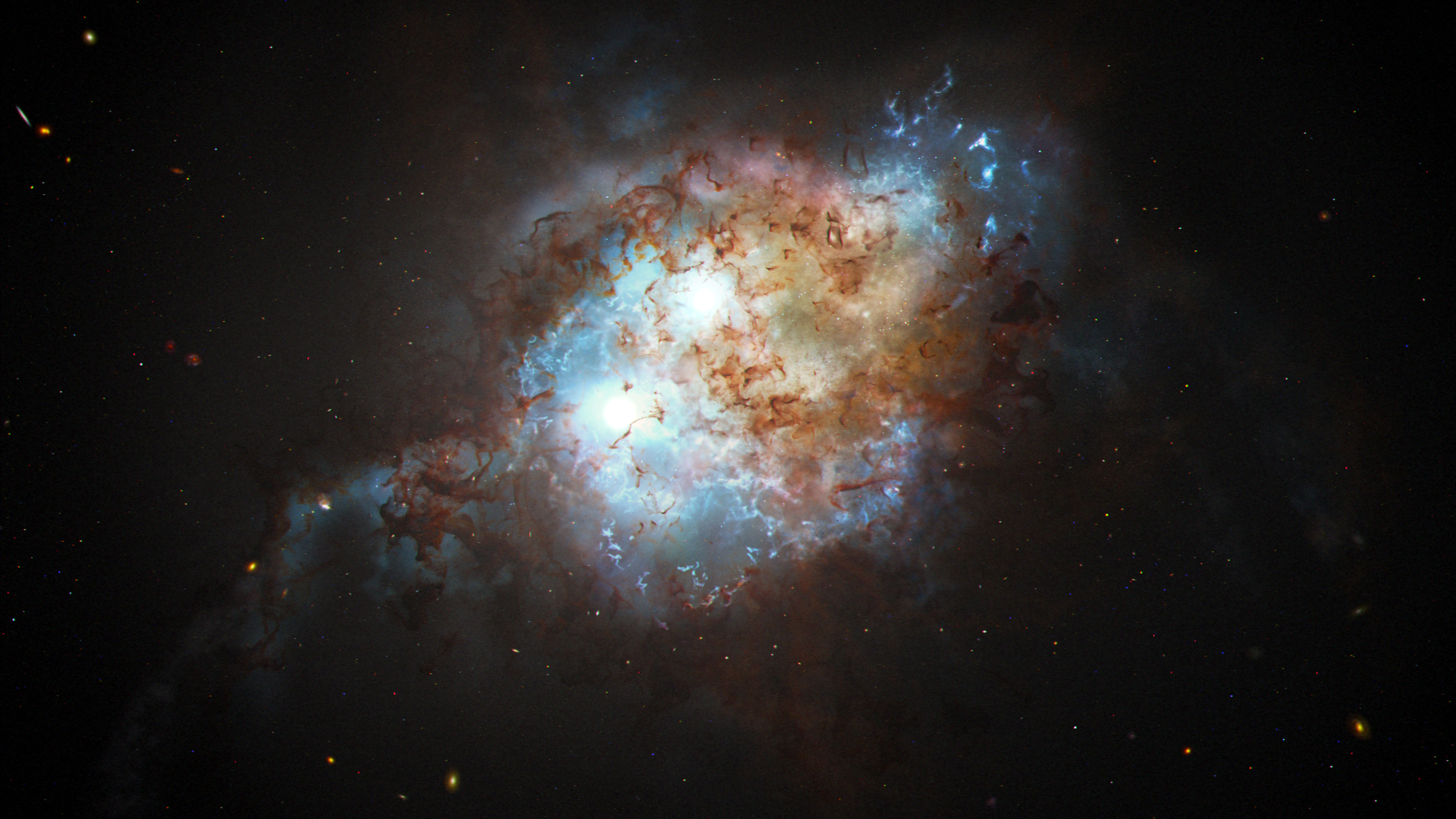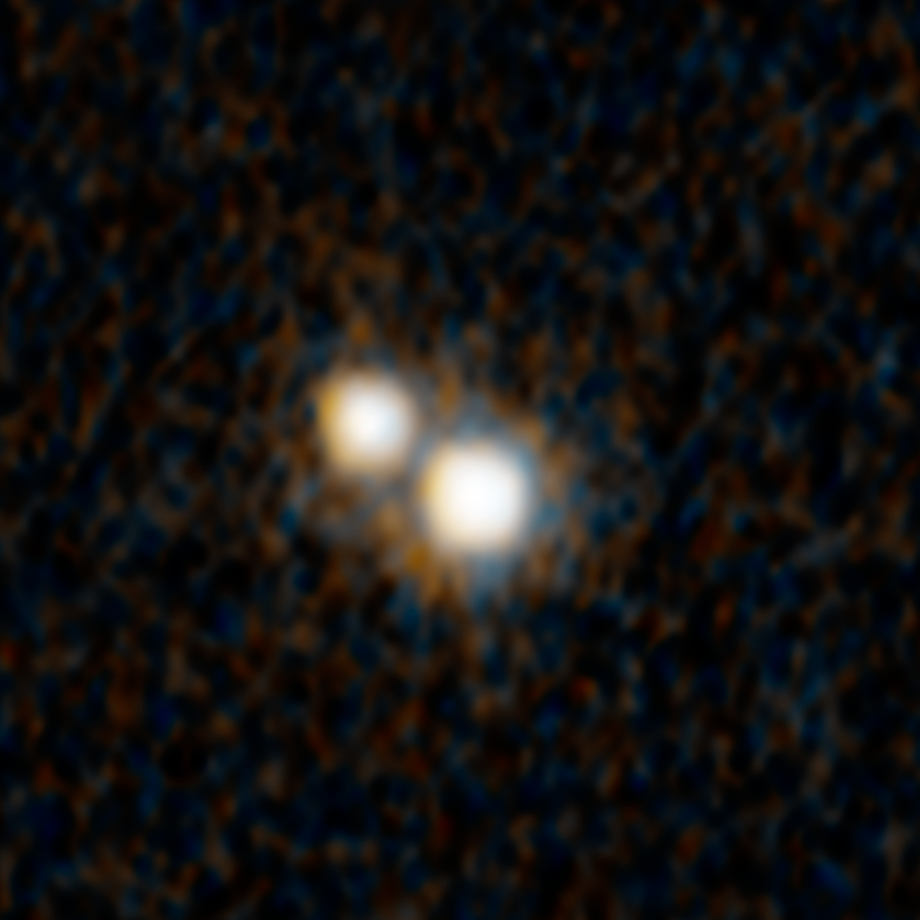Hubble confirms first binary quasar at the dawn of the Universe

SDSS J0749 + 2255 has for some time claimed to be the first discovered binary quasar. The Hubble orbiting telescope has been able to put the matter to rest.
Here's What We Know
SDSS J0749 + 2255 was detected by the Gaia telescope. The instrument is used to calculate the coordinates and radial velocities of stars that are in our galaxy. But from time to time, Gaia captures the light of distant and very bright objects, although this is not its task.
That's how the telescope was able to detect the observed object. SDSS J0749 + 2255 flashed like an alarm at a railway crossing. As a result of more detailed observations, scientists realised they were dealing with the two active nuclei of two converging galaxies, i.e. a double quasar.
Astronomers have found an explanation for why they saw quasars as bright object jumps. This is because the black holes at the centre of each galaxy were absorbing matter and provoking asynchronous bright flares.

Hubble has proven that the distance between the two quasars is comparable to the size of the galaxy, causing them to begin merging. Scientists believe the system of two black holes will form in 220 million years. They will then form one supermassive black hole.
The researchers said the discovery is the tip of the iceberg of the population of double quasars. The scientists hope that the resulting identification method will allow them to find more such systems. By the way, the observed object appeared in the early Universe about 3 billion years after the Big Bang.
Source: Nature